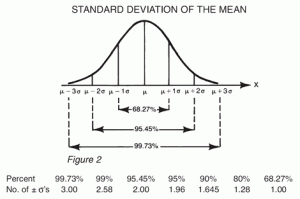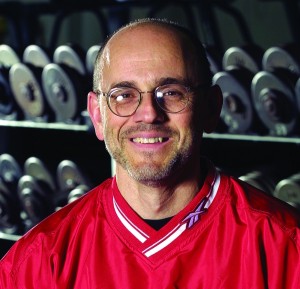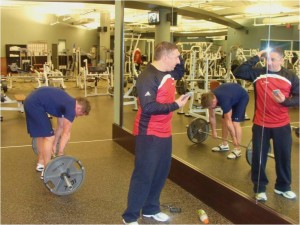So You Wanna Be A Trainer??
So next weekend I begin teaching a new crop of aspiring and bright-eyed trainer hopefuls looking to get their canfitpro certification. Will the next Mike Boyle be sitting in the room, or will it be a flock of Tracy Andersons sitting there slack-jawed and dead behind the eyes? Only time will tell.
Regardless of who attends, you can bet your bottom back squat they will all be looking to make a big splash in the world of personal training earn some mad cheddar, start off training celebrities and professional athletes, and charge upwards of $300 per session, because isn’t that what Harley Pasternak charges people like Lady Gaga and other really awesome people??
Ummmm, no.
Alwyn Cosgrove has said that close to 80% of trainers will quit the fitness industry within a year. I’m not sure how accurate this stat is, but in my own viewing of the fitness industry, I would have to agree. On top of that, Alwyn is one of the top guys in the fitness industry and knows what’s going on with regards to the business end of things, so I would totally defer to him on that end of things.
The funny thing is, this seems to be a lot like the law of normal distribution, where 66% of the mix are average and will continue to be “average,” making enough money to pay their bills (barely), and struggling to get clients. The bottom 1/6 will be out within a few months, realizing that it’s just not for them, especially after spending countless hours at a fitness facility and get their end of the month paycheck totalling a whopping $800, and wondering why business isn’t just coming to them and their awesomeness. The top 1/6 will have more clients than they can handle, will continuously grow their business and business model, and “make it” in fitness.
 Now within that 80% of trainers who will quit, there’s a good percentage of greenhorns who get into fitness because they feel it would be a “fun” career and because they want to help others see the benefits of exercise the way they have. Now in all honesty, I can’t imagine a more fun job, except for maybe a guy who gets to test-drive Lamborghini’s while simultaneously playing XBox and cuddling puppies. My guess is that job will be created when NASA is able to launch the next space shuttle.
Now within that 80% of trainers who will quit, there’s a good percentage of greenhorns who get into fitness because they feel it would be a “fun” career and because they want to help others see the benefits of exercise the way they have. Now in all honesty, I can’t imagine a more fun job, except for maybe a guy who gets to test-drive Lamborghini’s while simultaneously playing XBox and cuddling puppies. My guess is that job will be created when NASA is able to launch the next space shuttle.
The downside to the fitness image is that no one sees the back-end of things, where there is a considerable amount of time spent designing programs, making phone calls, emailing, scheduling clients, re-scheduling clients, doing paperwork, nutrition analysis, marketing, chasing referrals, remembering to get in your own workouts, and THEN you have to train clients with unending energy, passion and attention to detail. Sounds like fun, right?
Today, I thought I would share with you my humble opinion on what it takes to become a great trainer, or even just a trainer who will be here in the next fiscal year.
Step One: Education is Everything, and Means Nothing
While this statement may be a paradox in itself, I think a lot of trains just don’t quite understand what training takes. I’ve been fortunate enough to get a BSc. in kinesiology, a couple of additional certifications, and try to constantly increase my knowledge base beyond where it was yesterday. I would encourage every trainer out there to continue to grow professionally and try to get more value that they can give to their clients.
However, this means absolutely nothing when you have a warm body in front of you. The client doesn’t really care about whether you know your ass from your acetabulum, or whether you can tell the difference between glenohumeral anteversion versus retroversion. They want to know if you can help THEM. After all, that’s why they are in front of you. The cliché of “no one cares how much you know until they know how much you care” will always ring true.
To top it off, you actually have to get a warm body in front of you, and this doesn’t just magically happen. This takes a combination of work ethic, hard work, marketing, networking, and a little luck to get the right people in front of you who are willing to drop serious money on the concept that you can help them.
Unfortunately, I’ve seen trainers who have advanced degrees in exercise science who could recite physiological processes easily and with unwavering certainty display the personality of a moist dish rag, and struggle to get a new client. On the flip side, I’ve seen trainers who seemingly have new clients emerge from no where, who couldn’t tell you what the different abdominal muscles were.
Gwarrrgh, whaddaya mean, there’s more to abz than a six-pack??!? I never do ab training cuz I don’t want to thicken my midsection and look broad!!
These trainers obviously know how to communicate with their clients and get buy-in to their training strategy, regardless of whether it’s effective or not.
I’ve also seen really good trainers ho market themselves, continue to learn on their own, build lasting relationships with their clients, and wind up being successful for a long period. So you can see that you have to know your stuff, but if you have the ability to market and sell yourself, you can get by, but I wouldn’t recommend it. By learning more, you give yourself the best chance of success, and can help a broader range of people.
Step 2: Talk with Guys Who Are More Successful Than You Think You Can Be
The great thing about a lot of the really big names in fitness is that they are just as willing to give back to the young and developing trainers who are trying to make a name for themselves and build a business on honest hard work and client-centered centered service. As much as I would like to think I’m one of the best in the world, I’m no where close. Sure, I may be a big fish in the small pond of my own club, this blog, and a few other small ventures, but this is nothing compared to guys like Mike Boyle, Eric Cressey, Alwyn Cosgrove, Charles Poloquin, Paul Chek, Joe Dowdell, and truly a few dozen others. These are the guys I look up to, and aspire to get to their levels at one point in time.
Even better than talking with the successful people, try to spend a day or two with them and see what they do to make themselves successful. How do they arrange their schedules? What systems do they have in place to acquire new clients? What kind of extra values do they give to their clients (stretching, T-shirts, anything above and beyond)? How do they structure their workouts for specific clientele? I’m pretty sure most of the top guys would allow you to be a fly on the wall, and probably have internship programs available so that you can get your hands dirty and learn by doing.
Step 3: Get Out and Go to Events As Often As Possible
I teach a lot of continuing education for our gym, and surprisingly there are a lot of trainers who decide to not attend any of the seminars, saying things like “I don’t want to take the time off from work and lose any sessions.” These are also the people who have three clients each day, scheduled at 6am, 12 noon, and 5pm. If needed, they could easily re-schedule their clients to another day and actually be busy for a day, and find a way to get their learn on at the same time.
Others give the excuse that they don’t have the money. I can understand this, but the simple fact of the matter is that educational events are more of an investment than a cost. This past year, I went to the NSCA Personal Trainers Conference in Las Vegas, completely at my own expense (Note: last year I was a presenter so I had a few things covered by the conference).
The cost for the event, airfare, hotel, and food while I was there for 3 days was around $2000. From that cost, I was able to learn about 20 nuggets of golden information that I didn’t have before, found some new motivation and inspiration for some new workouts, and was able to get three new clients the NEXT WEEK due to these new bits of knowledge. The total income received from these clients was $4000, and continuing as they continue to train with me. Had I not known these little tidbits, I may have still been able to get the three to train with me, but these gems just sealed the deal.
It takes money to make money. I can assure you that the top guys aren’t going to conferences and seminars because they think they have the disposable income, but rather they go because they want to learn just ONE bit of information that may change the way they program their clients, how they run their business, or how they approach their lives that may provide the value for attending.
Step 4: Grind it Out
In my career as a trainer, I’ve probably logged 60 hour plus weeks in 40 of the 52 weeks of the year about 6 times, and routinely schedule clients anywhere from 6am until 8pm. Sounds like a great job, doesn’t it? While the hours may be extreme, this isn’t always jam-packed solid each day, as there are consistently breaks in the day for things like programs, workouts, etc.
While I would like to say I’m always busy, the simple fact of the matter is that the schedule will wax and wane based on the time of year, how much I’ve been actively recruiting new clients, and how much time I’m devoting to other projects. In talking with guys like Tony Gentilcore, their busy time at Cressey Performance is after the baseball season wraps up, through the dead of winter, and they’ve managed to train upwards of 170 sessions a day in a fairly small space. During the “slow periods” when all their athletes are playing more and in the gym less, they probably still average more than 100 clients a day, so their dead time is still a goal for most.
I can remember a point in time where I had 13 clients booked in for the day, and the following month had only three. Now I’m at a stage where I can consistently average 8-15 clients (one-on-one and small group), but it took years to get to this stage, and it’s a constant evolution. Like any small business (Note: for any trainer out there not on salary, you MUST start thinking of your business as YOUR business, not the club/facility business), the paycheck will be different each month.
A common thought is that it will take roughly 10,000 hours of work to consider yourself skilled at a specific task. This was popularized by Malcolm Gladwell’s book Outliers. Now, let’s say you work 40 hours a week for 50 weeks a year. That adds up to 2000 hours in a week. Now given that you will probably have a few hours each week where you’re pounding the proverbial pooch and not learning as much as you should, let’s say you’re actively engaged in becoming more awesome for about 30 hours a week. That adds up to 1500 hours each year of mastering your craft. That means it will take you 6 2/3 years to become considerably good at being a trainer. No wonder so many fail within the first year, they’re at the very steepest part of the trainer learning curve.
Want to end your day at 5, but have a potential new client coming for a consult at 8? Make a choice.
Want to work only Monday to Friday? Even though a lot of your clients may have to re-schedule and Saturdays would work best for them? Make a choice.
You could work on a schedule that’s best for you, or work on a schedule that’s best for your clients, but either way you’ll either lose time or lose income, until you can get enough of the clients at the right times of day to make your schedule work for you.






11 Responses to So You Wanna Be A Trainer??